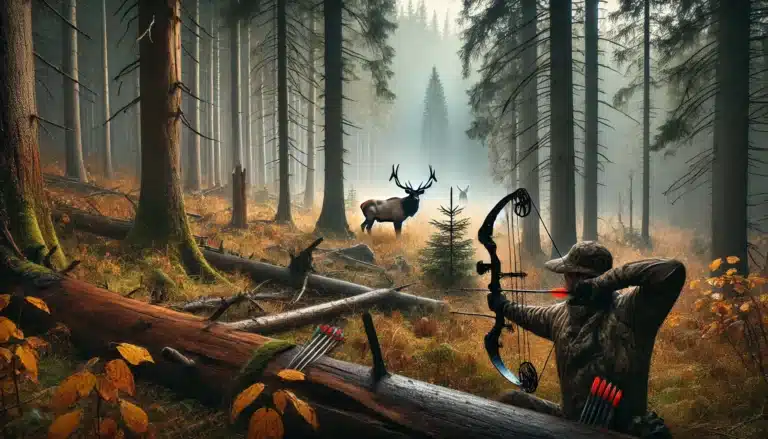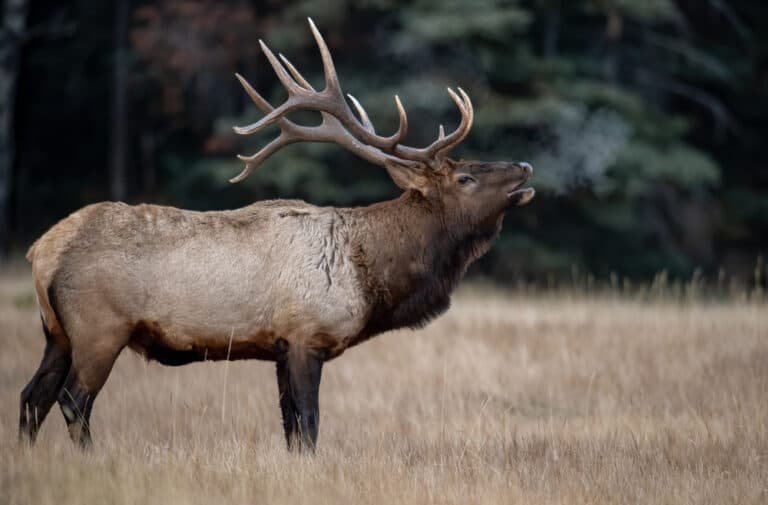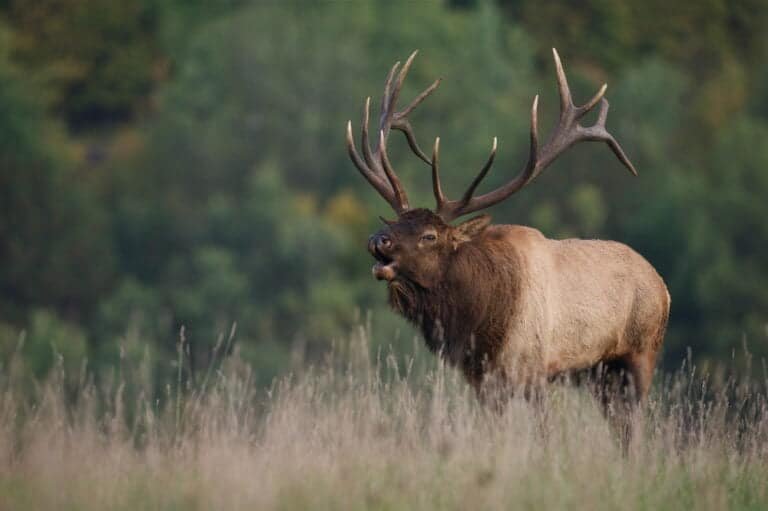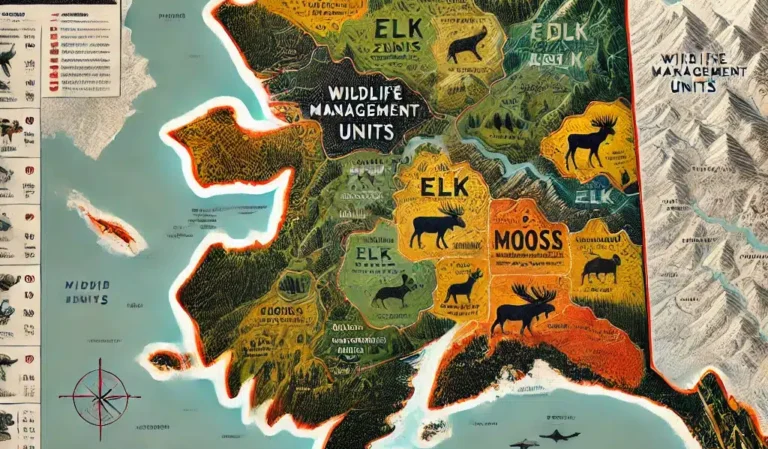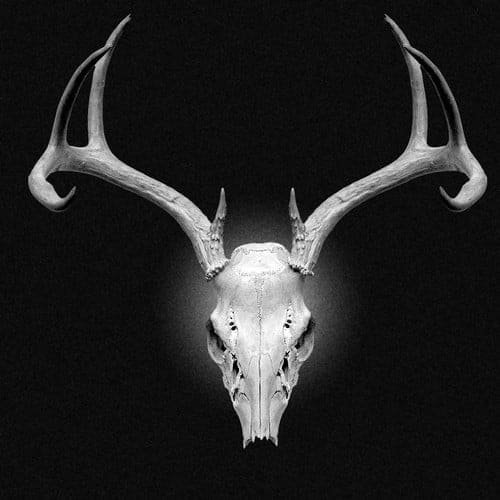Archery Elk Hunting 101: The Best Guide for Beginners
The bull’s bugle pierced the dawn silence, so close it made the hair on my neck stand up. Heart pounding, I nocked an arrow and tried to steady my breathing. After six days of hiking endless miles through steep terrain, my moment of truth was about to arrive. What happened next taught me lessons about elk hunting that no amount of research could have prepared me for. This is archery elk hunting!

Every September, thousands of bowhunters head into the backcountry dreaming of putting their tag on a mature bull elk. Yet fewer than 10% will succeed. The difference between eating tag soup and packing out meat often comes down to understanding the subtle details that experienced elk hunters learn through years of trial and error.
In this comprehensive guide, we’ll break down everything you need to know to increase your odds of success, from pre-season preparation to the moment of truth. Drawing from over two decades of guiding experience and hundreds of successful elk hunts, we’ll cover:
- Proven strategies for locating elk in any terrain
- The three calling sequences that consistently bring bulls within bow range
- Critical gear choices that can make or break your hunt
- Physical preparation that ensures you’re ready for mountain hunting
- Shot placement secrets for ethical harvests
- Common mistakes that send hunters home empty-handed
Whether you’re planning your first elk hunt or looking to improve your success rate, this guide combines time-tested wisdom with modern hunting tactics to help you notch your tag this season.
Pre-Season: Building Your Foundation for Success

Every successful elk hunt begins months before opening day. Let’s break down the critical elements that separate successful hunters from the 90% who go home empty-handed.
Physical Preparation: Training for the Mountains
Nothing derails an elk hunt faster than inadequate physical preparation. A mature bull elk quarters out at over 200 pounds – and that’s before adding your pack weight. Here’s your 12-week mountain preparation plan:
Cardio Framework
- Monday: Weighted pack hikes (start with 20 lbs, build to 50)
- Wednesday: Steep hill intervals (8-10 repeats)
- Friday: Long slow distance (2-3 hours)
- Saturday: Recovery hike with hunting boots
Strength Fundamentals
- Squats and lunges for leg power
- Core work for pack carrying
- Draw weight-specific training
- Focused shoulder stability
Pro Tip: “Don’t just get in shape – get in elk shape. If you can do a 3-mile pack out with 60 pounds twice in one day, you’re ready.” – Cameron Hanes
Essential Gear Selection
While you don’t need the most expensive gear, certain items can make or break your hunt:
Non-Negotiable Equipment
- High-quality boots (broken in before the hunt)
- Layered clothing system
- Quality optics (10×42 minimum)
- Emergency shelter
- Navigation tools (GPS + backup)
Bow Setup Specifics
- Draw weight: Minimum 60 pounds recommended
- Arrow weight: 450+ grains total
- Broadheads: Cut-on-contact fixed blade preferred
- Backup bow strings and D-loop material
Scouting: Digital & Physical

E-Scouting Process
- Identify potential areas using satellite imagery
- Look for:
- Dark timber near meadows
- Water sources
- North-facing slopes
- Elevation bands between 7,000-10,000 feet
Physical Scouting
- Focus on transition areas
- Look for:
- Fresh droppings
- Rubs on trees
- Wallows
- Game trails intersecting feeding areas
In the Field: Hunt Strategies That Work

The First Light Game Plan
Dawn positioning is critical. Here’s how to get it right:
Night Before
- Set camp well away from hunting area
- Check wind directions for morning
- Plan approach route
- Set multiple alarms
Morning Sequence
- In position 45 minutes before shooting light
- Listen for bugles to pinpoint location
- Use thermals to your advantage
- Stay mobile but quiet
Calling Strategies That Bring Bulls Close

Three Proven Sequences
- The Challenge Setup:
- Aggressive bugle
- Wait 3-5 minutes
- Follow with excited cow calls
- Challenge bugle if bull responds
- The Herd Setup:
- Series of soft cow calls
- Mix in calf sounds
- Light feeding sounds
- Patience is key
- The Lost Cow:
- Single cow calls
- Gradually increase urgency
- Move slightly between calls
- Works best mid-day
Stalking Techniques for Close Encounters

Success in elk hunting often comes down to your stalking ability. Here’s how to close the distance:
Wind Management
- Carry multiple wind checkers
- Watch thermal patterns
- Use terrain features
- Always assume swirling winds
Silent Movement
- Roll heel to toe
- Test each step
- Use elk movement to mask sound
- Stay in shadows
Distance Management
- Range landmarks ahead
- Know your maximum range
- Plan shooting lanes
- Identify escape routes
Shot Placement and Recovery

The Moment of Truth
Optimal Shot Placement
- Wait for broadside or quartering away
- Aim point: Behind shoulder, lower 1/3 of body
- Hold for second shot opportunity
- Never rush the shot
After the Shot
- Mark your shooting position
- Note exact hit location
- Listen for crash or running
- Mark last known direction
Blood Trailing Success
Initial Wait Times
- Heart/Lung: 30 minutes
- Liver: 2-3 hours
- Muscle: 4-6 hours
- If in doubt, wait longer
Tracking Tips
- Mark last blood before advancing
- Use UV light in darkness
- Look for disturbed ground
- Follow downhill on hard trails
Field Care and Pack Out

First-Hour Priority List
- Take hero photos quickly
- Begin cooling process
- Start quartering
- Prepare pack loads
Meat Care Fundamentals
Temperature Control
- Remove hide quickly
- Get quarters off ground
- Use game bags
- Cool below 50 degrees
Packing Sequence
- Hind quarters first
- Front quarters
- Backstraps
- Neck meat
- Trim and extras
Common Mistakes to Avoid
- Calling Too Much
- Let the elk’s behavior guide calling
- Less is often more
- Read the responses
- Poor Shot Choices
- Know your limitations
- Wait for the right angle
- Don’t force opportunities
- Inadequate Planning
- Have backup areas ready
- Know multiple access points
- Plan for weather changes
- Equipment Issues
- Test everything beforehand
- Carry repair kits
- Know your gear limits
Final Thoughts: Keys to Success

Success in elk hunting comes down to the following:
- Physical preparation
- Mental toughness
- Proper planning
- Patience
- Ethical decisions
Remember: Every unsuccessful hunt teaches lessons that bring you closer to success. Take notes, learn from mistakes, and keep pushing forward.
Reading and Understanding Elk Behavior

Seasonal Patterns That Matter
Early Season (Opening Week)
- Bulls in bachelor groups
- Focus on dark timber
- Pattern water sources
- Look for feeding areas near bedding
- Morning/evening movement is predictable
Pre-Rut Phase
- Bulls starting to separate
- Increased bugling activity
- More aggressive calling works
- Focus on wallows
- Watch for rubs and scrapes
Peak Rut
- Bulls gathering cows
- Most vocal period
- Satellite bulls vulnerable
- Less predictable patterns
- Best time for calling tactics
Late Season
- Herds reforming
- Focus on food sources
- Less vocal activity
- Pattern bedding to feeding
- Weather drives movement
Decoding Elk Vocalizations
Types of Bugles and What They Mean
Location Bugle
- Shorter duration
- Less aggressive
- Often at first light
- Response not expected
Challenge Bugle
- Longer duration
- Multiple screams
- Aggressive chuckles
- Looking for fight
Herd Bull Bugle
- Regular intervals
- Keeping track of cows
- Less aggressive
- More consistent
Cow Talk Translated
- Mews: Basic communication
- Chirps: Calf location
- Estrus Whine: Ready to breed
- Assembly Call: Gathering herd
Terrain Tactics by Elevation
High Country (Above 9,000 ft)
- Focus on basins
- Watch weather patterns
- Use glassing effectively
- Hunt near treeline
- Early season hotspot
Mid-Elevation (7,000-9,000 ft)
- Dark timber bedding
- Wallows common
- Peak rut zone
- Mixed feed and cover
- Best all-around zone
Lower Elevation (Below 7,000 ft)
- Late season refuge
- Agricultural interface
- Weather dependent
- Private land issues
- Winter patterns
Advanced Calling Strategies

Building Your Elk Hunting System
Pre-Season Checklist
3 Months Out
- Begin physical training
- Check and repair gear
- Start shooting practice
- Plan scouting trips
- Book travel arrangements
1 Month Out
- Increase training intensity
- Dial in bow setup
- Finalize hunt areas
- Check regulations
- Practice calling
Week Of
- Pack gear completely
- Check weather forecasts
- Review emergency plans
- Share hunt plans
- Mental preparation
Day Pack Organization
Quick Access (Top Pocket)
- Wind checker
- Range finder
- Calls
- Snacks
- GPS
Main Compartment
- Kill kit
- Extra layers
- First aid
- Water filtration
- Firestarter
Outer Pockets
- Game bags
- Rope
- License/tags
- Maps
- Compass
Frequently Asked Questions About Archery Elk Hunting

Q: What draw weight do I need for elk hunting?
While most states require a minimum of 40-50 pounds, we recommend at least 60 pounds for elk hunting. This ensures adequate penetration for ethical kills. However, being able to draw smoothly and hold steady is more important than maximum weight.
Q: What’s the best arrow setup for elk?
Based on our testing and experience:
- Total arrow weight: 450-550 grains
- FOC (Front of Center): 12-15%
- Spine: 300-400 with 60-70 lb draw
- Broadhead: 125-grain fixed blade
- Arrow length: 29-31 inches
Q: What’s the minimum gear needed for a DIY elk hunt?
Essential gear includes:
- Quality boots ($200-300)
- Reliable bow and arrows ($800+)
- Quality optics ($300-500)
- Layered clothing system ($500)
- Navigation tools ($200) Total minimum investment: ~$2,000
Q: When is the best time to hunt elk?
Peak success rates occur:
- September 10-20 (Peak rut)
- Early morning (5:30-9:00 AM)
- Late afternoon (4:00-7:00 PM)
- After weather changes
- During new moon phases
Q: How close do I need to get for a shot?
Optimal shooting distances:
- Ideal: 20-30 yards
- Maximum: 40-50 yards
- Average kill shot: 32 yards
- Stalking Distance: 100 yards
- Setup distance: 50-60 yards
Expert Tips From Professional Guides

Randy Newberg’s Top 5 Tips
- “Focus on water sources early season”
- “Learn to read wind thermals”
- “Stay mobile during mid-day”
- “Call less than you think you should.”
- “Always have multiple stalking routes planned”
Cameron Hanes’ Fitness Advice
- Daily training routine
- Mountain endurance tips
- Strength requirements
- Mental preparation
- Recovery techniques
State-by-State Elk Hunting Guide
Colorado
- Season dates
- Unit information
- Success rates
- Draw odds
- OTC opportunities
Montana
- Unit breakdowns
- Public land access
- Seasonal patterns
- Regulation specifics
- Guide requirements
Gear Reviews and Recommendations


